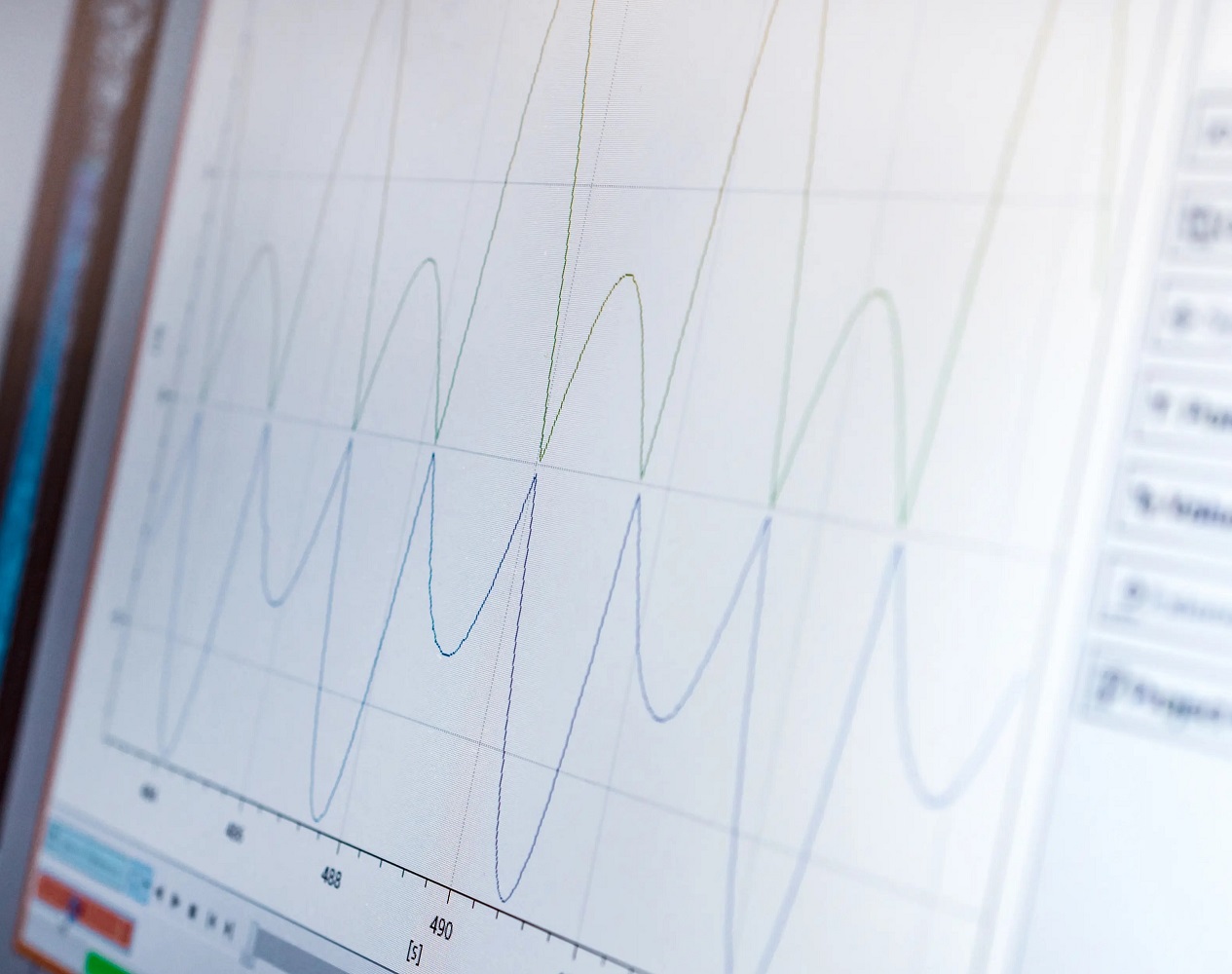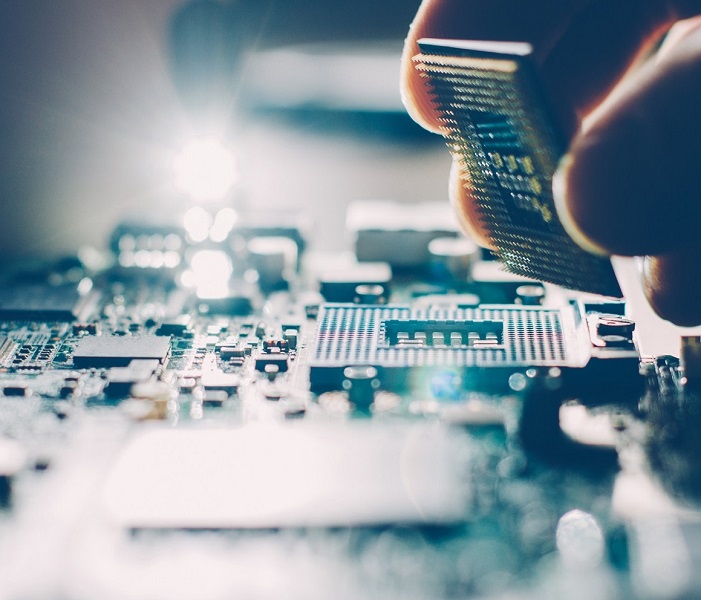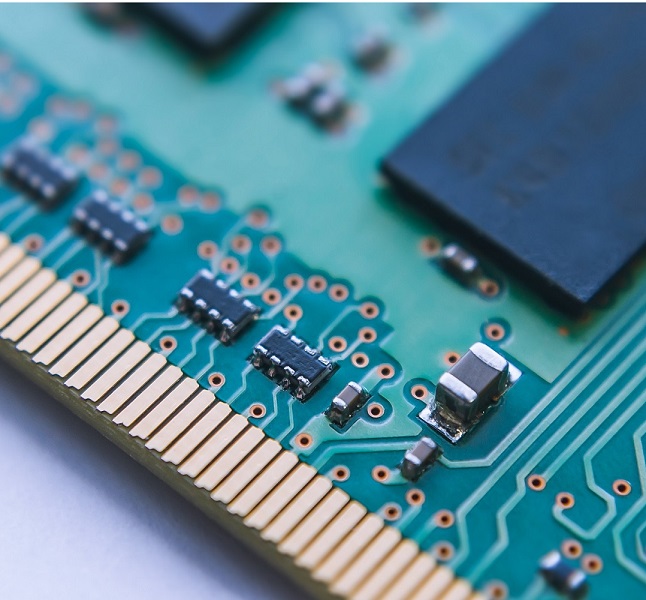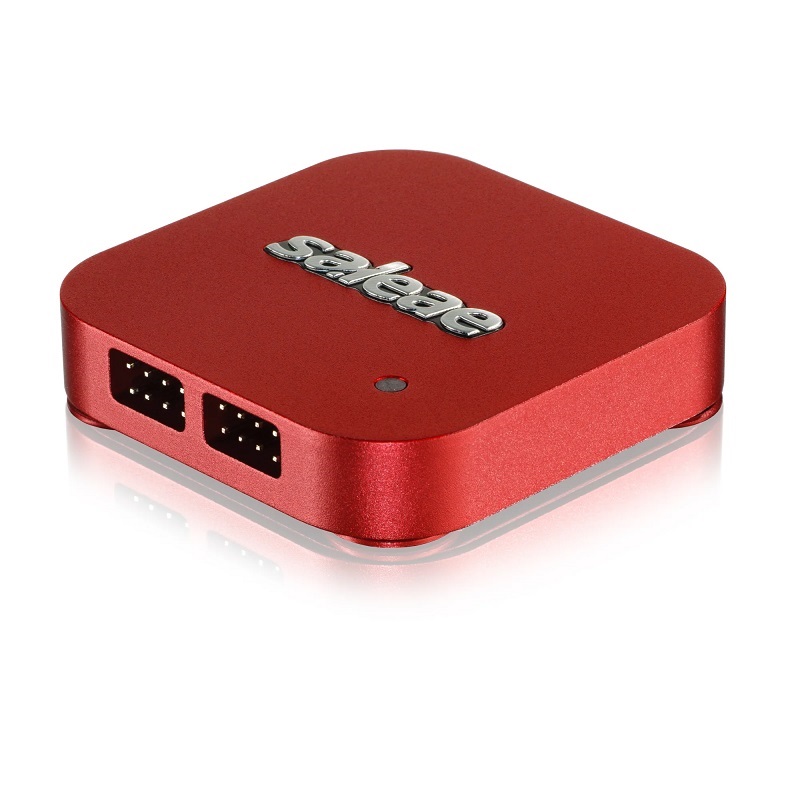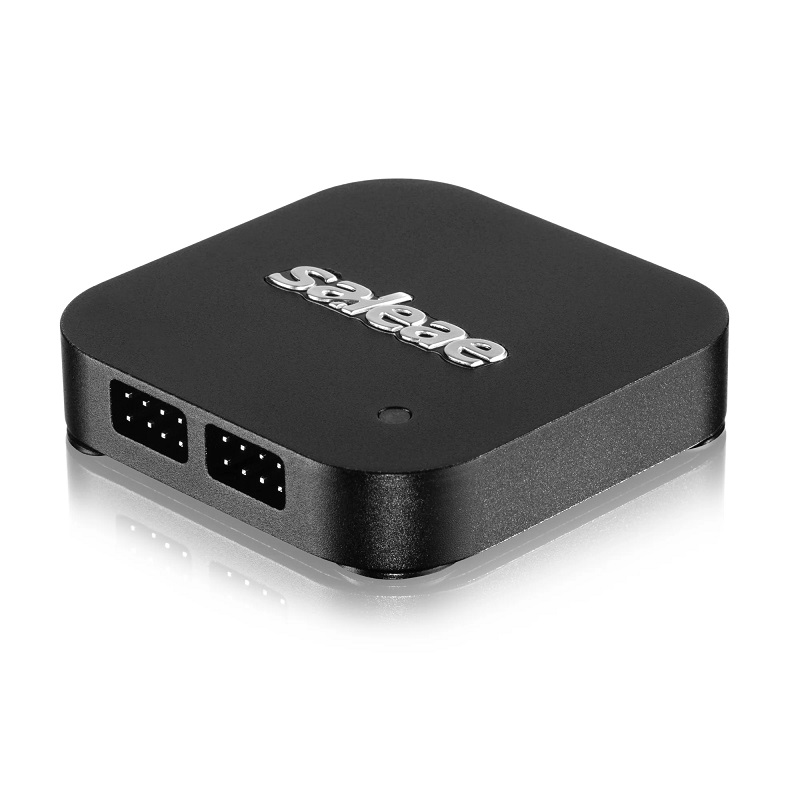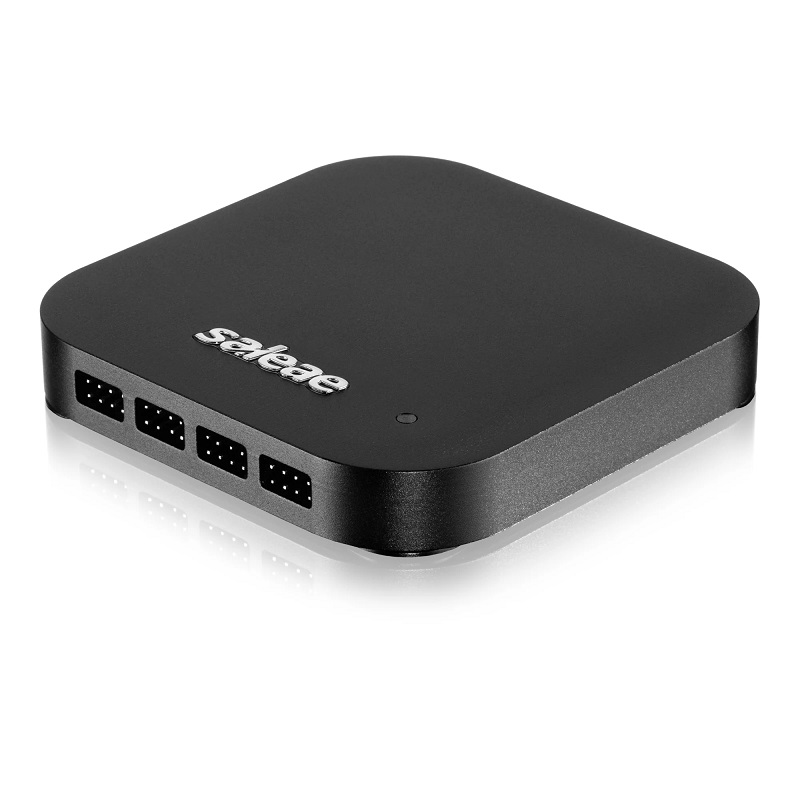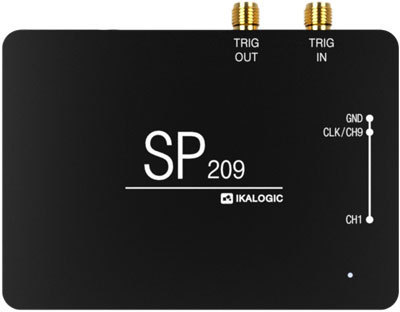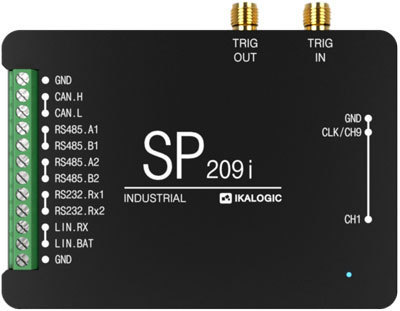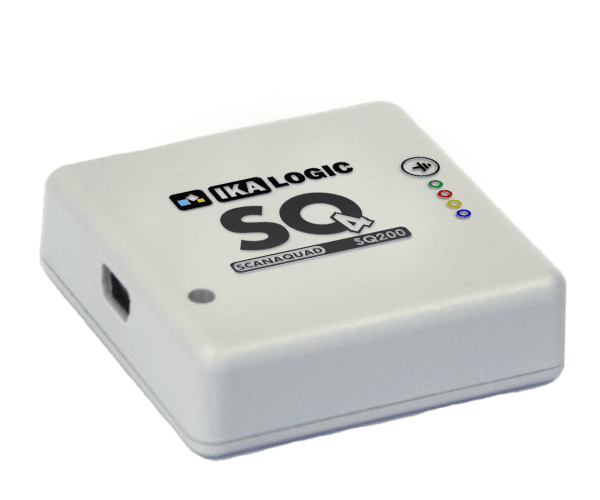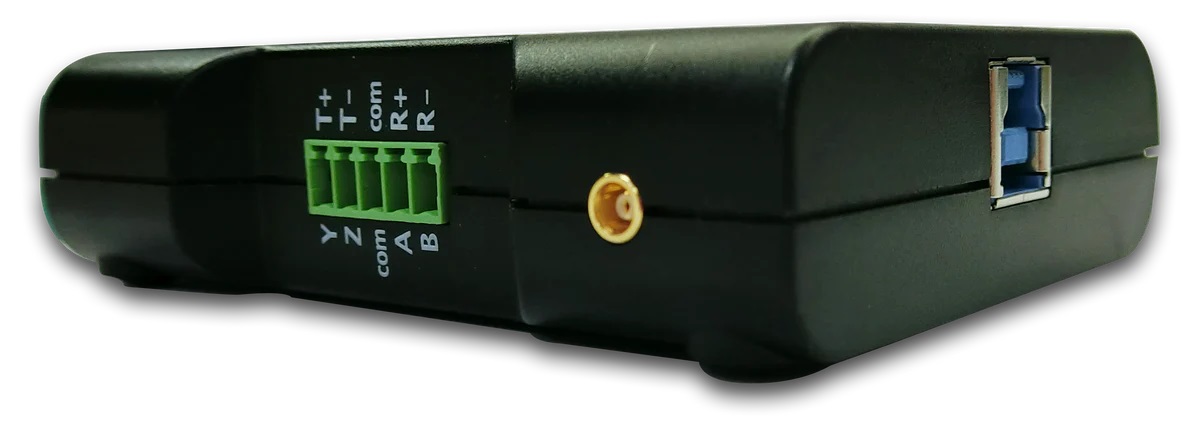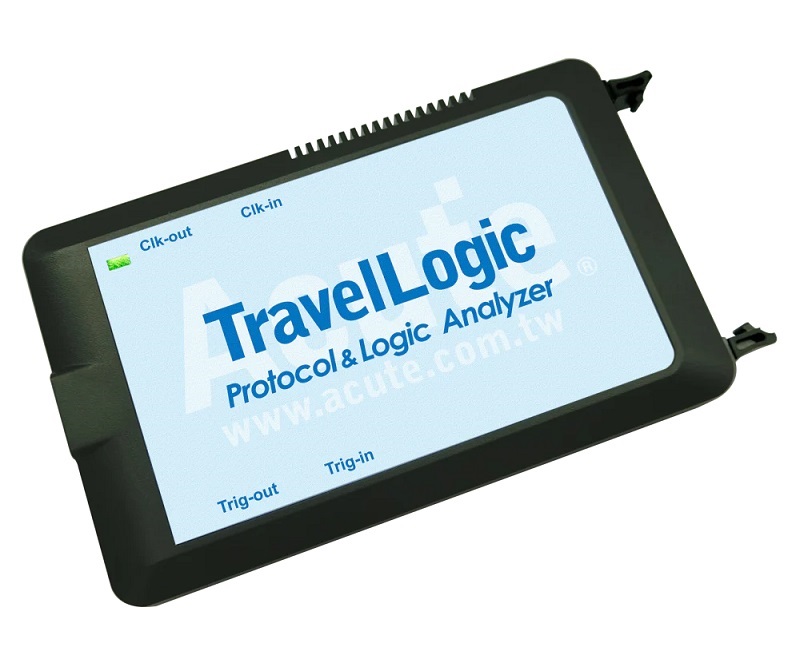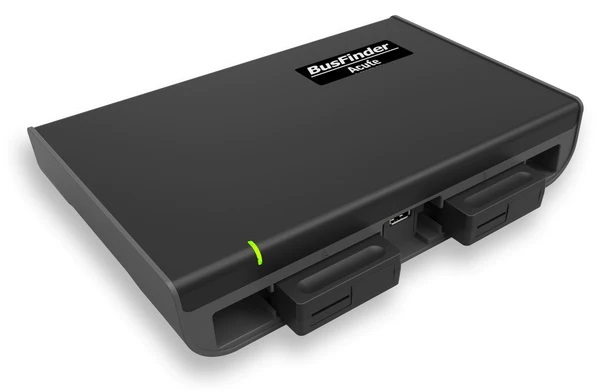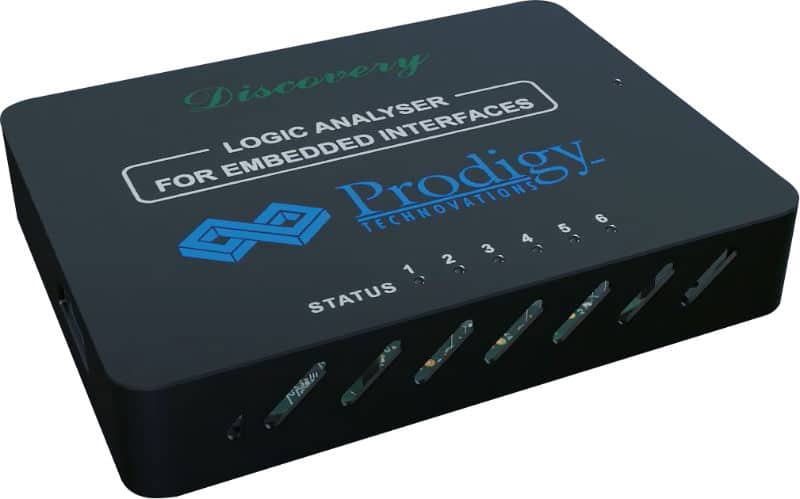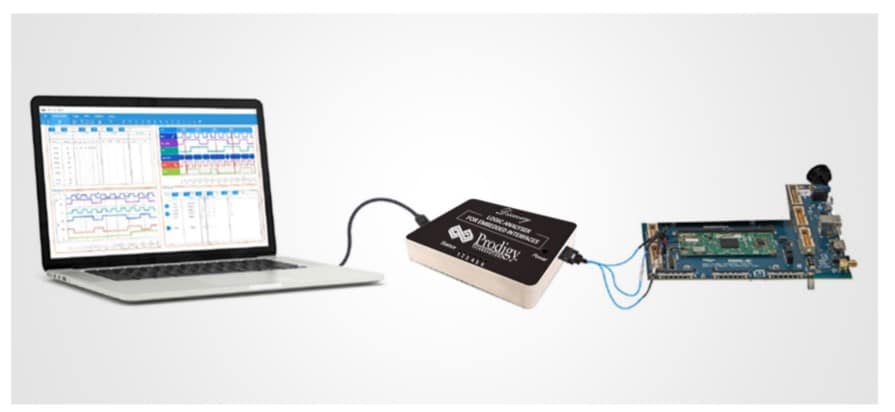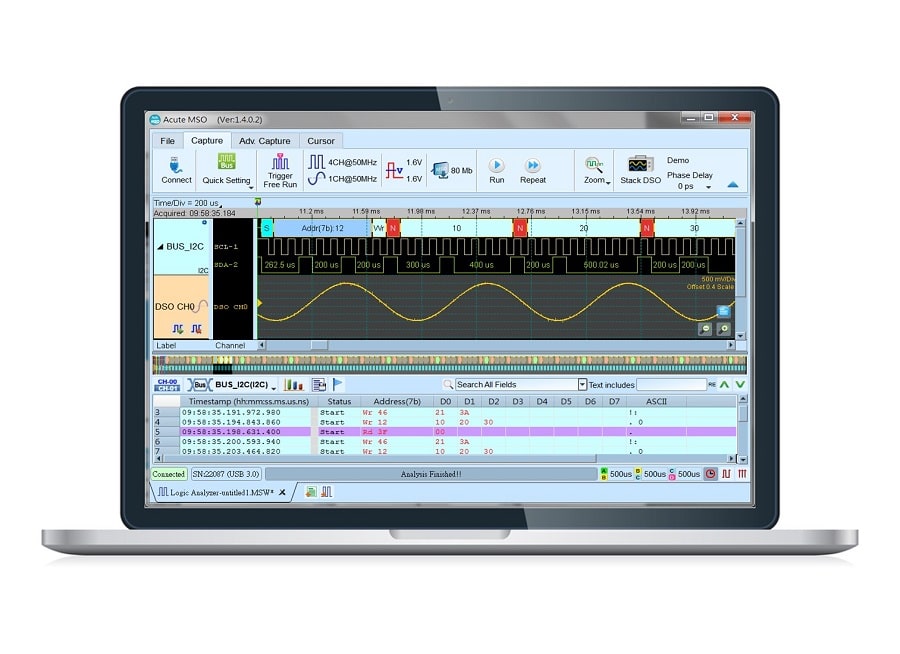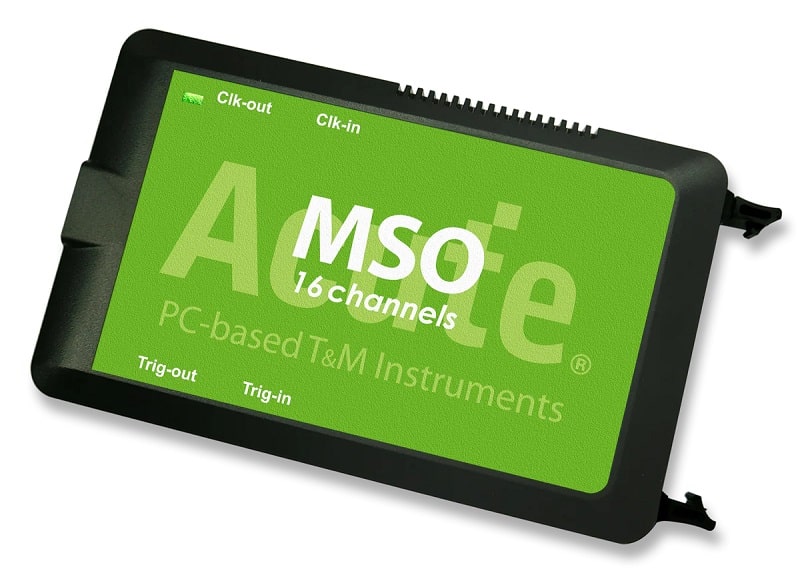Logic Analyzer

A logic analyzer is an electronic measuring device that can mark up digital signals over time and display them graphically. A logic analyzer is often used for testing or troubleshooting digital electronic circuits.
The Prodigy embedded logic analyzer enables simultaneous protocol analysis and logic analysis, enabling designers to troubleshoot circuit and system level problems faster and easier than ever before.
Filter
–

SAL-00112
The Saleae Logic 8 is a compact 8 channel logic analyzer with up to 100 MS/s acquisition speed.
€479.00*

SAL-00111
The Saleae Logic 8 is a compact 8 channel logic analyzer with up to 100 MS/s acquisition speed.
€479.00*

SAL-00115
The Saleae Logic Pro 16 is a compact 16 channel logic analyzer with up to 500 MS/s acquisition speed.
Variants from €479.00*

SAL-00116
The Saleae Logic Pro 16 is a compact 16 channel logic analyzer with up to 500 MS/s acquisition speed.
Variants from €479.00*

SAL-00113
The Saleae Logic Pro 8 is a compact 8 channel logic analyzer with up to 500 MS/s acquisition speed.
Variants from €479.00*

SAL-00114
The Saleae Logic Pro 8 is a compact 8 channel logic analyzer with up to 500 MS/s acquisition speed.
Variants from €479.00*

SP209
SP209 series logic analyzers and protocol decoders provide detailed analysis of logic signals and protocols.
€419.00*

SP209i
SP209 series logic analyzers and protocol decoders provide detailed analysis of logic signals and protocols.
€519.00*

SQ200
The SQ200 logic analyzer can acquire logic signals on 4 channels with sampling rates of up to 200 MHz.
€199.00*
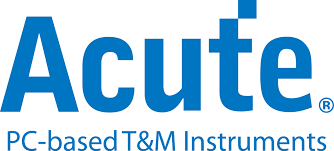
TB3016B
The TB3016B supports a variety of protocols and has two differential channels.
Variants from €210.00*

TB3016E
The TB3016E supports I²C, MIPI I3C 1.1, SPI, UART (RS232), I²S, LIN2.2, MDIO, PMBus, SMBus & USB1.1.
Variants from €210.00*

TB3016F
The TB3016F supports the protocols I²C, MIPI I3C 1.1, SPI, UART (RS232).
€210.00*

TL4134B
The Acute TL4134B offers 34 channels, 2 GHz sampling rate and 2 analogue inputs for protocol analyser mode.
Variants from €1,390.00*

TL4134E
The Acute TL4134E offers 34 channels, 2 GHz sampling rate and 2 analogue inputs for protocol analyser mode.
€1,390.00*

TL4234B
The Acute TL4234B offers 34 channels, 2 GHz sampling rate and 2 analogue inputs for protocol analyser mode.
Variants from €1,390.00*

LA3068B+
The Protocol & Logic Analyzer LA3068B+ is designed for multi pin IC applications and has 80 channels.
Variants from €7,000.00*

LA3068E+
The Protocol & Logic Analyzer LA3068E+ is designed for multi pin IC applications and has 80 channels.
€7,000.00*

LA3136E+
The Protocol & Logic Analyzer LA3136E+ is designed for multi pin IC applications and has 136 channels.
Variants from €7,000.00*

LA3136B+
The Protocol & Logic Analyzer LA3136B+ is designed for multi pin IC applications and has 136 channels.
Variants from €7,000.00*

BF7264B
The BusFinder base unit is a 2-in-1 protocol/logic analyser with MIPI D-PHY, eMMC, SD, NAND options with 64 channels.
€13,890.00*

BF7264B+1
The BF7264B+ BusFinder base unit is a protocol/logic analyser with MIPI D-PHY, eMMC, SD, NAND options with 64 channels.
€17,490.00*

PGY-LA-EMBD
Logic Analyzer for Embedded Interfaces enables protocol Analysis and system-level debugging for I2C, SPI, UART, I3C, SPMI, CAN/CAN FD and RFFD
€1,399.00*

MSO2008E
The MSO2008E is a 3-in-1 analyzer that can be used as a logic analyzer, protocol analyzer and oscilloscope.
€660.00*

MSO2116B
The MSO2116B is a 3-in-1 analyzer that can be used as a logic analyzer, protocol analyzer and oscilloscope.
€2,400.00*

